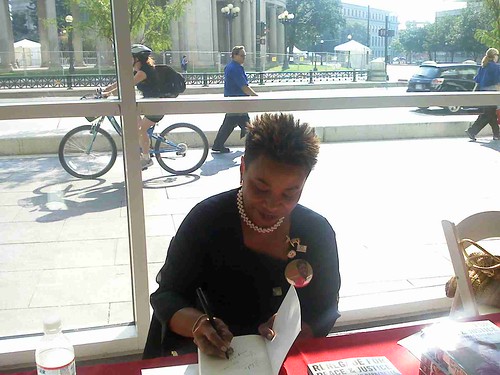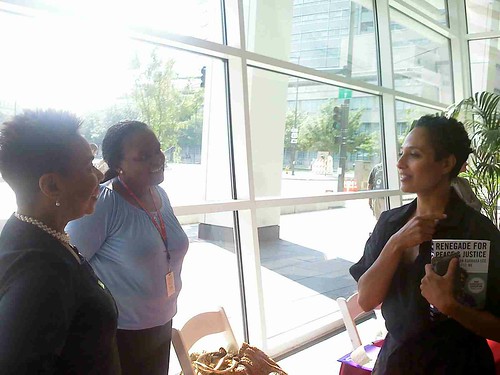
Damon Winter/The New York Times
Barack Obama and Hillary Rodham Clinton campaigning in Florida in October.
WASHINGTON — Hillary Rodham Clinton has decided to give up her Senate seat to become secretary of state in the Obama Administration, making her the public face to the world for the man who dashed her own hopes for the presidency, confidants of Mrs. Clinton said Friday.
The accord between the two leading figures of the Democratic Party was the culmination of a week long drama that riveted the nation’s capital. President-elect Barack Obama and Mrs. Clinton fought perhaps the most polarizing nomination battle in decades, but in recruiting her for his cabinet, Mr. Obama chose to turn a rival into a partner, and she concluded she could have a greater impact by saying yes than by remaining in the Senate.
Her selection is still to be formalized and will not be announced until after Thanksgiving. It would be yet another direction in the unlikely journey of a onetime political spouse in Arkansas who went on to build a political base of her own and become a symbol of achievement to many women.
The role, though a supporting one, would make her one of the most influential players on the international stage, and it would represent at least one more act for one of the nation’s most prominent public families, as former President Bill Clinton would also become an ad hoc member of the Obama team.
The sometimes awkward dance between Mr. Obama and Mrs. Clinton in the eight days since he invited her to Chicago for a meeting culminated in a telephone call on Thursday. Before the call, Mrs. Clinton was skeptical about the prospect of joining the cabinet, said her confidants, who insisted on anonymity to discuss the situation. But Mr. Obama addressed her concerns about access, personnel and other issues, leading her to conclude she should take the job, they said.
“She’s ready,” one of Mrs. Clinton’s confidants said. The first meeting in Chicago “was so general” that she needed to have a better sense of how she would fit into Mr. Obama’s administration, and the call helped her “just getting comfortable” with the idea of working together, the confidant said.
Mr. Obama’s advisers said that although no offer had been formally accepted, her nomination was “on track” and would probably be announced after the holiday. Mrs. Clinton’s Senate office broke a week of silence to acknowledge the talks but cautioned that they had not been made final.
“We’re still in discussions, which are very much on track,” said her spokesman, Philippe Reines. “Any reports beyond that are premature.”
Mr. Obama wants to announce the members of his national security team at once. Advisers said he was weighing whether to make retired Gen. James L. Jones, a former Marine commandant and NATO supreme commander, his national security adviser, installing a formidable counterweight to Mrs. Clinton. The president-elect was still trying to decide whether to keep Defense Secretary Robert M. Gates on an interim basis or install another choice to run the Pentagon right away.
The choice of Mrs. Clinton pleased many in the Democratic establishment who admire her strength and skills, and they praised Mr. Obama for putting the rancor of the campaign behind him. “Senator Clinton is a naturally gifted diplomat and would be an inspired choice if she is chosen by President-elect Obama as secretary of state,” said Warren Christopher, who held that job under her husband.
But it could also disappoint many of Mr. Obama’s supporters, who worked hard to have him elected instead of Mrs. Clinton and saw him as a vehicle for changing Washington. Mr. Obama argued during the primaries that it was time to move beyond the Clinton era and in particular belittled her claims to foreign policy experience as a first lady who circled the globe.
Advisers said Mr. Obama concluded after the election that the problems confronting the nation were so serious that he needed Mrs. Clinton’s stature and capabilities as part of his team, notwithstanding their past differences. The bitterness that inhabited the Obama team for much of the year has faded with time, advisers said.
And many of the aides working on the transition with Mr. Obama are not campaign veterans with scars from the primaries, but rather former Clinton administration officials like Rahm Emanuel, the incoming White House chief of staff, and John D. Podesta, the transition co-chairman, who admire Mrs. Clinton.
For Mrs. Clinton, becoming secretary of state would require her to sacrifice the independence that has come with a Senate seat and the 18 million votes she collected in the primary season. She has found it liberating the last eight years to speak for herself, not as someone’s spouse. But friends said she could still have her voice while subordinating her ambitions to Mr. Obama’s agenda.
“Hillary Clinton will always be seen as her own person,” said Mickey Kantor, a longtime friend who served as commerce secretary in her husband’s administration. “But you know, Hillary Clinton’s a terrific lawyer. She knows how to represent a client, and she’s good at it. And I don’t have any doubt in my mind that she’ll be a team player.”
Mrs. Clinton had to accept that she might never become president, a former aide said. “There’s a very small chance that she could run again,” he said. “You’re not going to be the president, so you want to make sure your next few years, which may be your last in public life, really make a mark.”
Two advisers to Mrs. Clinton said she was concerned about establishing her role in the administration before agreeing to the job. She wanted assurances that she would have direct access to Mr. Obama and not need to go through a national security adviser, they said. And she wanted the authority to pick her own staff at the State Department.
This was particularly important because her relationships with members of Mr. Obama’s foreign policy team fractured during the bruising primary season. Gregory B. Craig, a longtime friend of the Clintons' who broke with them to back Mr. Obama and helped savage her foreign policy background during the primaries, was selected as White House counsel and removed from direct involvement with the secretary of state.
Mrs. Clinton wanted to avoid the situation that faced another celebrity chosen as secretary of state, Colin L. Powell, who found hawks like John R. Bolton given top jobs under him after he took the job under President Bush.
“Powell had to take neocons like Bolton, and that just created problems,” said one Clinton adviser. “On the other hand, it would be dreadful if only Clinton loyalists worked at State and Obama loyalists at the N.S.C.,” the National Security Council.
It is also not clear how Mrs. Clinton’s selection would affect the role and influence of Vice President-elect Joseph R. Biden Jr., whose expertise in foreign policy was a main reason Mr. Obama chose him for the job.
Another complication was Mr. Clinton, whose extensive business and philanthropic activities around the world could pose conflicts of interest. Lawyers for both sides spent days combing through his finances and crafting guidelines for his future activities.
People close to the vetting said Mr. Clinton turned over the names of all 208,000 donors to his foundation and library and agreed to every condition requested by Mr. Obama’s transition team, including restrictions on his paid speeches and his role at his international foundation. The lawyers agreed to notify all of the donors that their identities would be revealed to the Obama team, but it was not clear if they would all be made public.
Mrs. Clinton would bring a distinctive background to the State Department. As first lady, she traveled the world for eight years, visiting more than 80 countries, not only meeting with foreign leaders but also visiting villages, clinics and other remote areas that rarely get on a president’s itinerary.
While Mrs. Clinton and Mr. Obama agree most of the time on foreign policy, during the campaign she made a point of highlighting their differences, seeking to paint him as unsophisticated. Now those differences will be brought into stark relief as she seeks to become into Mr. Obama’s emissary to the world.
On Iran, for instance, Mrs. Clinton staked a position during the primaries to the right of Mr. Obama. She voted in favor of a measure more hawkish than what even most of the Bush administration had been willing to venture, asking Mr. Bush to declare Iran’s 125,000-member Revolutionary Guard Corps a foreign terrorist organization. Mr. Obama did not show up to vote that day but said that if he had, he would have opposed the bill.
Many Iran experts criticized the bill, saying it was similar to Iran’s declaring the United States military a terrorist organization because it carried out Mr. Bush’s orders. Even some members of the Clinton campaign’s foreign policy team at the time privately disagreed with the vote.
But the bigger fight between Mrs. Clinton and Mr. Obama was over the issue of talking to Iran, which Mrs. Clinton could soon find at the top of her portfolio. When during a debate Mr. Obama termed “ridiculous” the notion of not talking to adversaries, Mrs. Clinton sharply criticized him, calling that position “irresponsible and frankly naïve.”
The difference between Mrs. Clinton and Mr. Obama on the issue is more perception than reality, advisers to both now say. Mr. Obama has said he would have a lower-level envoy do preparatory work for a meeting with Iran’s leaders first, and Mrs. Clinton has said she favors vigorous diplomacy and lower-level contacts as well.
“She’s not against talking to enemies; it was a question of how it’s done,” said Martin Indyk, the former United States ambassador to Israel. “That was the critical issue.”
On Israel, the other chronic foreign policy issue that will bedevil the next secretary of state, Mrs. Clinton would bring baggage as well. She is seen as fiercely loyal to Israel, which can be both a plus and a minus, Middle East experts say.
While her pro-Israel record as a senator from New York might cause her to be viewed with suspicion in the Arab world, it could give her credibility to ask Israel to make tough choices for peace.












 by
by  October 26, 2008 - “Organic” is one of the most popular buzz words in the area of health and nutrition in the past decade. Sales of organic food surpassed $10 billion in 2004, and are expected to reach $32 billion by 2009. The expected growth rate of 17-20% far outweighs the growth rate for conventional food at 2-3%. With the emergence of such a lucrative market, it is not surprising that the information reported is also very confusing. Each new report seems to contradict the previous one. Is organic food more nutritious than conventional food? And more importantly, especially to parents, is it worth the higher price? Skeptics wonder if this is just another fad that will soon join the graveyard alongside the no fat and low carb faze of previous years.
October 26, 2008 - “Organic” is one of the most popular buzz words in the area of health and nutrition in the past decade. Sales of organic food surpassed $10 billion in 2004, and are expected to reach $32 billion by 2009. The expected growth rate of 17-20% far outweighs the growth rate for conventional food at 2-3%. With the emergence of such a lucrative market, it is not surprising that the information reported is also very confusing. Each new report seems to contradict the previous one. Is organic food more nutritious than conventional food? And more importantly, especially to parents, is it worth the higher price? Skeptics wonder if this is just another fad that will soon join the graveyard alongside the no fat and low carb faze of previous years.














